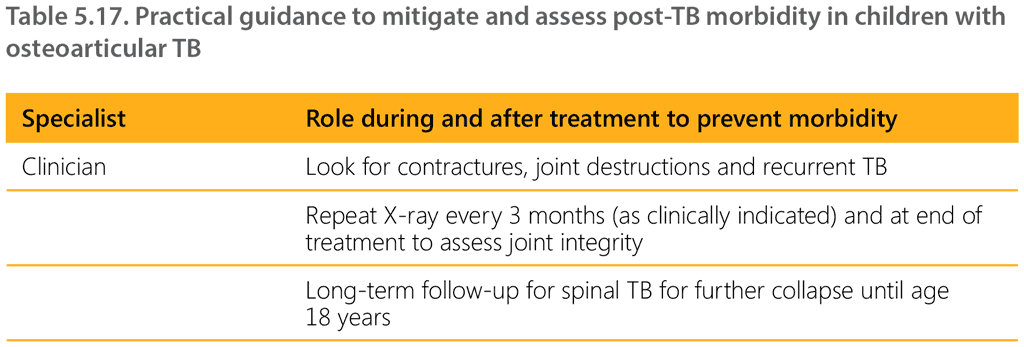Перекрёстные ссылки книги для 5.4.4. Post-TB osteoarticular disease in children and adolescents
Although osteoarticular TB is uncommon (approximately 1–2% of all children with TB and 8% of children with EPTB), the potential long-term consequences of the disease, particularly in children, can be major (149).
Spinal TB accounts for approximately half of osteoarticular TB cases and can result in bone loss, increasing deformity (e.g. kyphosis, kyphoscoliosis), late risk of neurological sequelae (e.g. paralysis) and disturbed growth potential (150, 151). Spinal deformity and neurological sequelae can progress even after successful completion of treatment because of the growing skeletal system. Children should be followed annually at least until they reach skeletal maturity to check for potential progressive deformity, which could lead to late neurological, cardiopulmonary or psychological complications. The mainstay for other forms of osteoarticular TB is to maintain the range of motion, prevent contractures and assess for joint destruction (152). Table 5.17 summarizes the multidisciplinary approach required in the management of children with osteoarticular TB.


 Обратная связь
Обратная связь